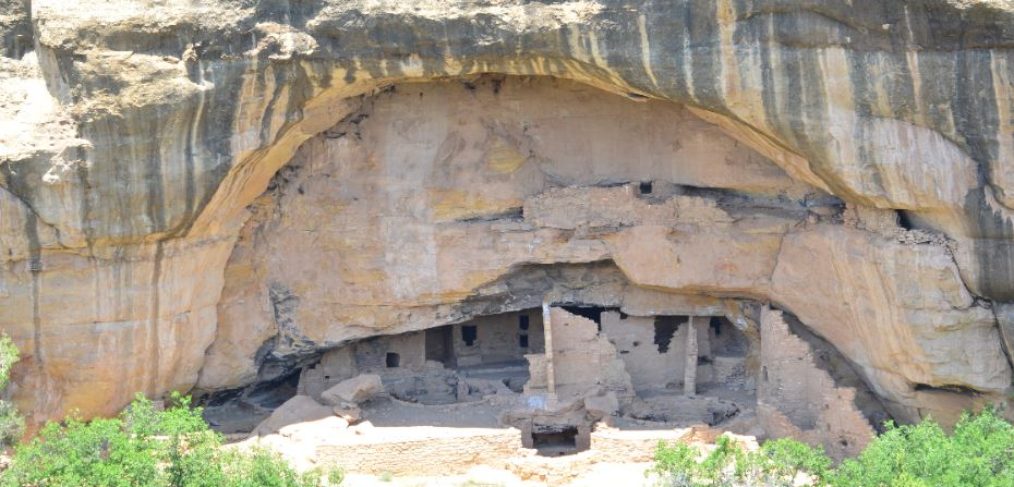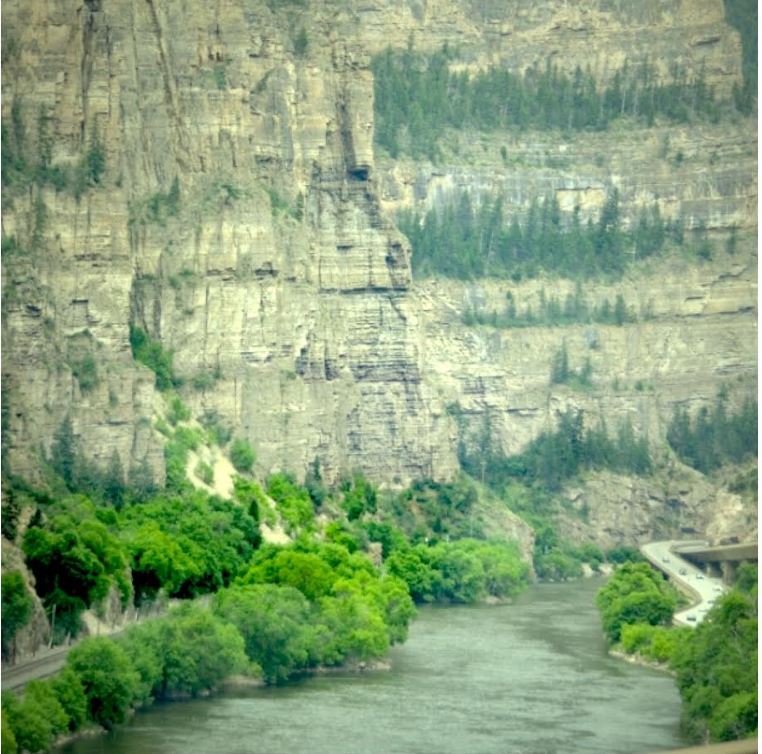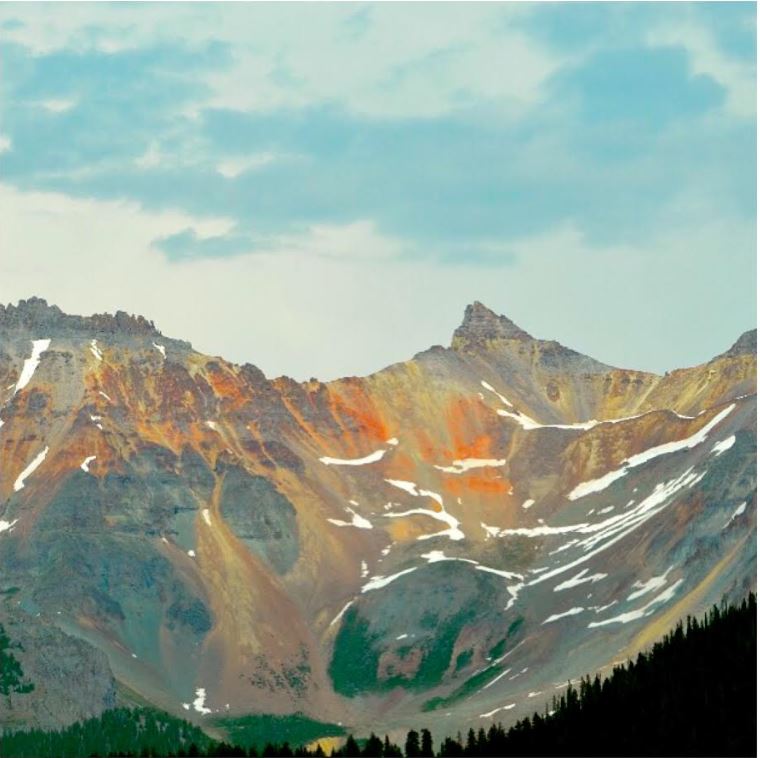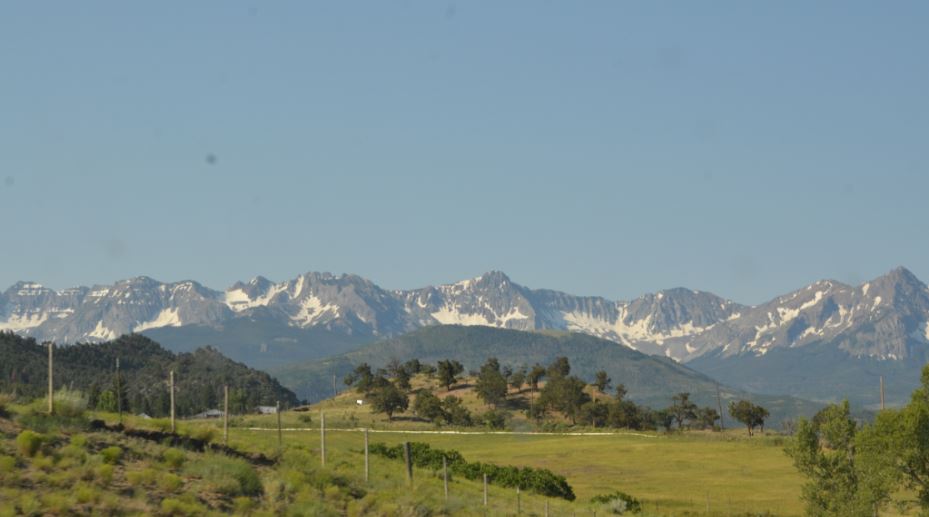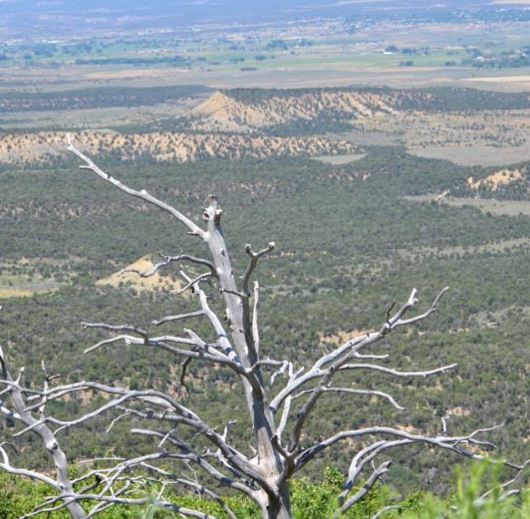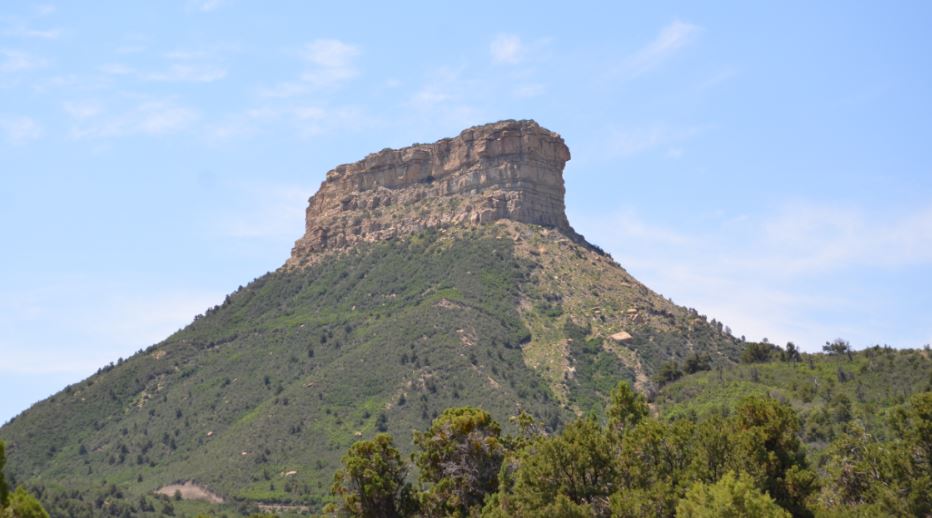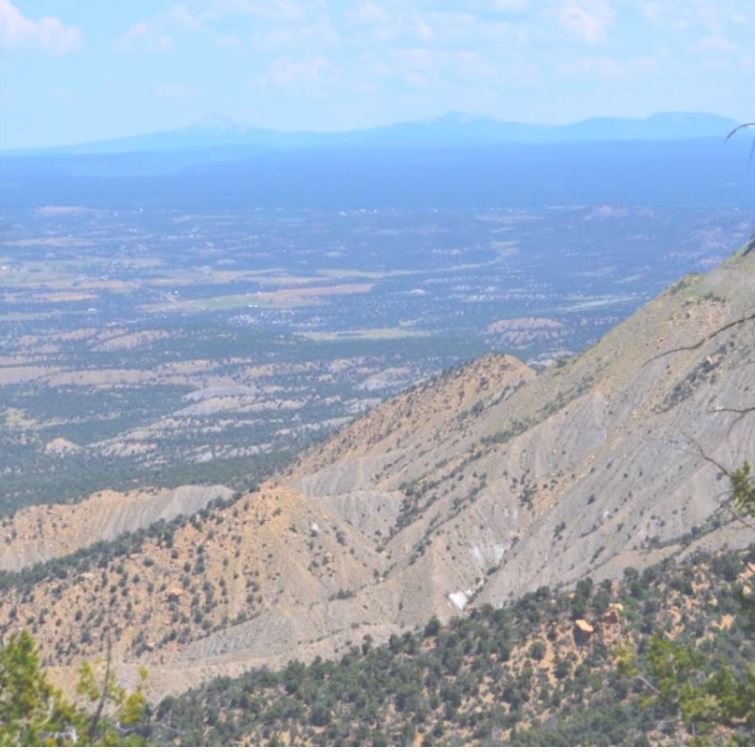A visit to the Pueblo ruins in Colorado
As a child, our ancient history lessons include what was then called the Anasazi Ruins, located in the southern-most part of Colorado. These ancient cliff dwellings, located on a high plateau, some thousand feet above the valley were impossibly glamorous to my then-seven and eight-year-old self. It wasn’t until this last year that I was able to actually see them in person.
This blog wasn’t supposed to come until the fall, when the heat of the area where the ruins are located has ebbed. Then I realized that we went in early July, and while it was hot, it was certainly endurable. Heck, if people can see the Grand Canyon in the middle of August, tourists can make it to the ruins!
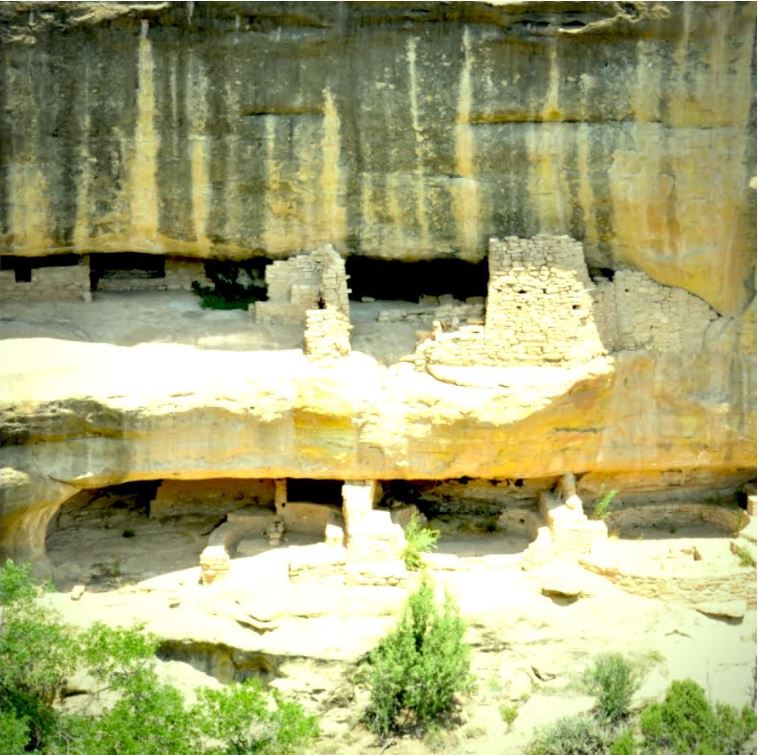
One of 600 cliff dwellings, as seen from the opposite ridge of the Mesa Verde National Park
The backstory
Historians hypothesize the ancient pueblo people, as they are now called, searched for safe areas where water could be collected through the seasons, and used to supply their needs. Scouts are presumed to have found these cliffs, and heaven-only-knows why and who the first settlers scaled up and down the cliffs, then proceeded to car mini-cities from the rock, under the protective stone overhangs. More than 600 cliff dwellings dot the inner linings of the walls. The inhabitants were able to grow and harvest plants, which augmented a presumably meat-based diet.
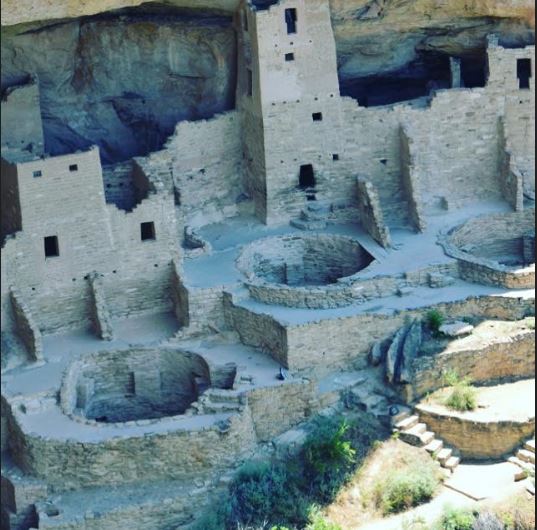
Drive your car, stop and walk to the edge. Be careful, the park doesn’t believe in stopping selfie photogs from falling off the cliff.
For nearly 700 years, the cliffs were inhabited, and then archeologists believe they were abandoned due to prolonged drought. This made it impossible to grow plants and sustain life of any kind.
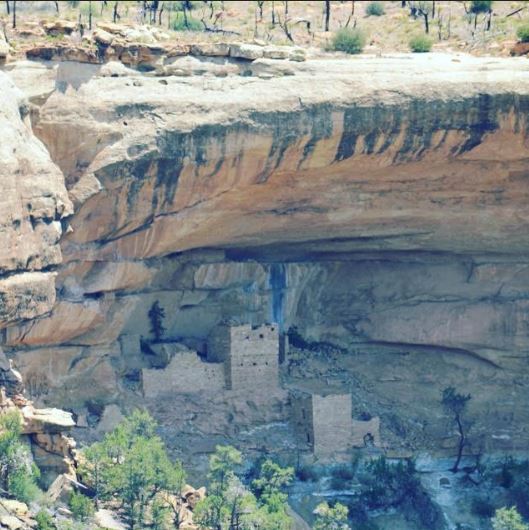
See those blackish/brownish stains on the top ridge? Those are water stains. The Anasazi identified where the water fell, captured it, made mud, then bricks, creating entire communities.
Getting there
It’s an easy route from almost any direction. Most non-US residents are familiar with the ski-resort town of Telluride, Colorado, or its sister city, Ouray, heralded for being “the little Switzerland of the US,” because of its ice climbing in the winter and off-road vehicle terrain in the summer.
Beyond glorious drive to and from Ouray/Telluride down to Cortez
If you are starting from Ouray, tack on another 30 minutes. But from Telluride, it’s less than a two-hour drive through beautiful mountain roads. Keep your camera handy, because you are going to see mountains that look painted with copper and gorgeous rivers.
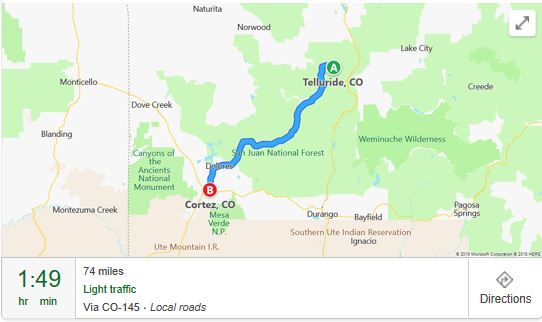
When arriving at the Mesa Verde National Park, you will see the first of several famous peaks. Up and up you have climbed to reach this point, and you absolutely must stop at any number of the scenic spots.
Up, up you drive to get to the high plateau these incredible people found and homesteaded
Believe it or not, the picture-perfect shots are not to be had from the eye-level view. It’s from above, on the opposite ridge, looking down into the specific site. One doesn’t require binoculars to get a great shot, or even a long lens (I had neither). A regular camera will do. The ‘opposite view’ allows one to capture the full majesty of the dwelling.
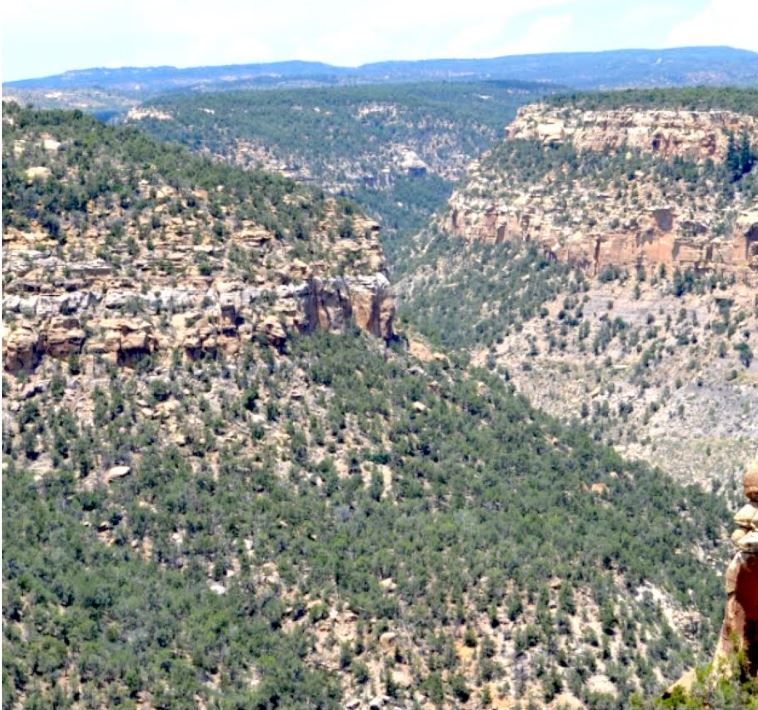
The tours
We took one tour, and the rest we saw by car. We had no idea what to expect with a tour, and were mildly disappointed, so I want to pass a long a few things that aren’t conveyed at the ticket office or on the brochure. The tour of a dwelling, depending on which one you choose, take quite a while to get down to the dwelling, (it’s really hot, evening in early July) and then once you reach the bottom, are strictly limited to the path. The photos I thought I was going to take were completely impossible. Clearly, one has to be a professional photographer, with a magazine or have gained a special authorization to set in, or around inside the dwelling areas. I get it, we don’t want to disturb/erode the areas, and I’m cool with that. It’s just impossible to get more than a few (dark) shots of the dwellings when on foot.
Compare that to the drive and view from the ridge. The roads are alongside the cliffs, and multiple stopping/parking areas are available so one can get out, walk the short distance (some are right at the edge, others require less than five minute walk) then look down/across to the dwelling on the other side. This was far and away a better vantage point than the street level, per se.
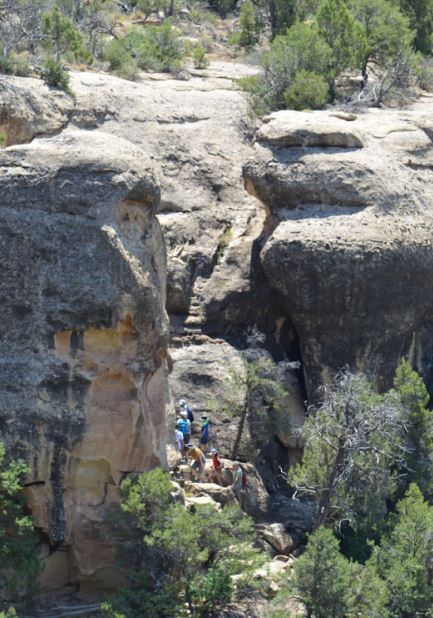
An example of what a tour group must climb up/down to get to a cliffside dwelling
Don’t miss the center
Most of the time, I am seriously disappointed with park centers, but all four of us agreed the Mesa Verde center ranks in the top five. Perhaps it was the volume of items, or the presentation of original artifacts (and recreations of others) but we enjoyed it immensely. When a center captivates an 8-year old who doesn’t want to leave, but continue reading the small print, you know it’s good.
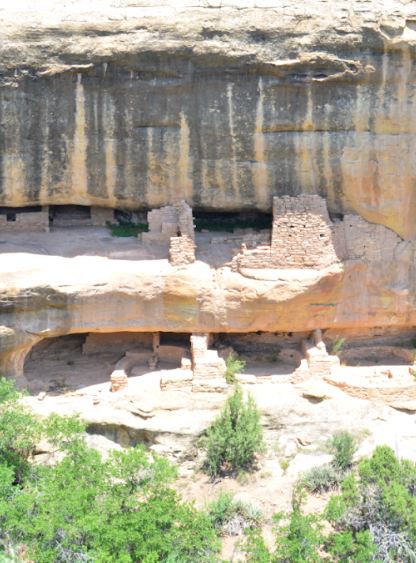
A restaurant, not located at the center, but in a different area, is open, but we didn’t stop, so I can’t comment on that. Just know you won’t starve if you neglected to bring food or water on the journey.

Entering and existing the Park, you will see famous rock structures like the above
What I liked most
Realizing the life-long dream of seeing the dwellings, walking the area where people lived and shaking my head in wonder at the incredible skill and fortitude of our ancient people.
What I liked least
The lack of public bathrooms and the heat!
This is one of my favorite national parks in the United States thus far, ranking way above Mt. Rushmore in my mind. Both feature carved rock, but whereas one is monuments of presidents’ past, these cliffside dwellings were, and are, a testament to the skills, determination and capabilities of the indigenous people. It’s truly awe inspiring.

